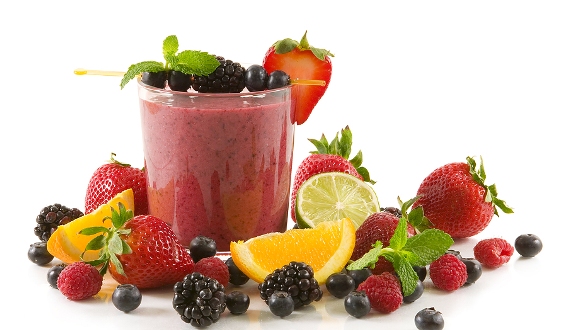
Berry fruits are well-known for their high antioxidant content and rich flavor.
The timing of our meals can have a major effect on how we feel and perform – particularly as we start the day. But what if your stomach isn’t a “morning person?”
Just as with the issue of what we should eat, there are a huge number of competing theories on when to eat it. These range from well-worn adages like “three squares a day” through to well-researched training protocols incorporating approaches such as fasted cardio or more recently intermittent fasting. Religion even plays a role, for example, with Buddhist monks who only eat one large meal in the morning to free their day for spiritual practice.
What works best is obviously highly individual. However, it’s a solid bet that in most cases your day will go a whole lot better if you put fuel in the tank in the morning. A surprising number of people will acknowledge this… and then almost immediately follow up with “but I don’t have time” or “I’m trying to lose weight” or maybe even just “I can’t eat until I get a cig and coffee.”
Fair enough… or maybe not. There is no real evidence skipping breakfast aids fat loss unless you throw in some exercise. It’s more likely to see you drag through the morning because you have no energy and then overeat on high-cal food later on. Get rolling more quickly and you may just burn more calories throughout the day. Time and lack of appetite do count – but what if you could prepare a semi-instant, highly nutritious breakfast that goes down without a fight?
Core concepts
Smoothies provide an excellent solution to this question. They can be prepared in five to ten minutes, taste potentially amazing and deliver more nutrition than many people eat in a whole day. Smoothies are often equated with fruit or vegetable juice but they are usually thicker with more fiber. This means they digest more slowly so you stay full longer and don’t get that burn and crash sugar rush.
You can blend up pretty much anything but a couple of fruit servings plus leafy greens, flavorings and a little liquid is a useful base. The greens may seem a bit off but the taste disappears in the mix and they are packed with good stuff. It’s also helpful to add a little fat in the form of, say, an avocado to aid nutrient absorption. But be judicious as fat slows digestion, allowing fruit sugars to ferment in your stomach.
It’s also good to get some protein in the brew if possible – particularly if your body responds better to protein than carbs. This can be easily accomplished by dropping in a scoop of whey, rice or pea protein powder or using almond or another nut milk as your liquid. You can even toss in a couple of eggs. Keep a few softish-boiled in the fridge if you’re concerned about salmonella or find the whites slime your system.
Smoothie technology
Apart from the ingredients, the only thing you need is a decent blender. If you have a few hundred dollars to spare (minimum), you can go top of the line with, for example, a Vita Mix or Blendtec. But something from your local electric shop is probably going to be fine initially – just make sure it has reasonable power. Blending the mix for more than a couple of minutes can overly damage nutrients and introduce air bubbles that speed up oxidization.
Ease of disassembly and cleaning are also key factors. Artfully designed seals and safety locks may look great in the shop but they can quickly become annoying, and crusty, if you use your machine on a daily basis. Also try to find something with a one-liter or larger container. You’ll be able to drink half your mix for breakfast and then store the remainder in an airtight bottle for later.
Seasonal smoothies
It can be fun to match your smoothie to the season. Whenever possible, use fresh, locally grown ingredients rather than those that have been stored or shipped large distances. If you are just starting with smoothies, try this on for size. Just drop all the ingredients in a blender and whizz. If the mixture is too thick, add a little more liquid. (Full recipe here)Somei yoshino
Two large bananas
Handful of strawberries
Rice milk to consistency
Little ginger and honeySomei yoshino is the most well-known Japanese cherry tree.

There is a lot of innocstent data out there regarding the nutrient value of different foods. I find that a great resources is the USDA’s National Agriculture Library Nutrient database: ndb.nal.usda.gov/ndb/foods/lisadadt. Just type the fruit into the search bar and if you select full report it will give a more detailed breakdown. Not that I make a habit of trusting the USDA, but I think this data is pretty accurate.
Thanks for your comment, Ramazan. The USDA nutrient database is excellent. I think the main page may have moved though. This seems to be the latest link: http://www.ars.usda.gov/main/site_main.htm?modecode=12-35-45-00.
http://nutritiondata.self.com is another useful resource. It uses the same USDA database but presents the information in a more user-friendly way. The charts and graphs, etc. are good for making quick comparisions of different items.
A little follow-up: I’ve found the above link to the main page of the ARS site doesn’t work on occasion so I’ve posted an article with a couple of other ways to get there: https://www.naturelicious.com/food-info-finding-nutrient-breakdowns.